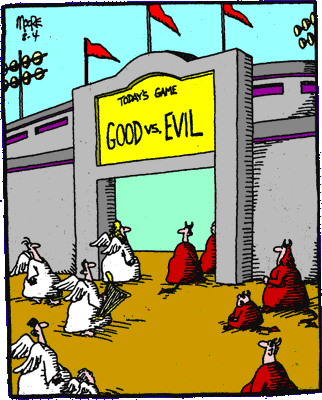Fixing Wall Street? The Feds Blew It.
Courtesy of Roger Ehrenberg at Information Arbitrage
 Today’s press is constantly filled with bluster about "new" regulatory regimes, Executive Pay Czars and other gripping topics stemming from 20/20 hindsight and populist zeal. Sadly, they all miss the point. Wall Street’s weakest link, it’s super-leveraged capital structure and reliance on overnight funding, was laid bare in the depths of the financial crisis last fall. If not for the wide-open purse strings of the US Government, institutions ranging from Citigroup to Goldman Sachs would have gone down. No doubt.
Today’s press is constantly filled with bluster about "new" regulatory regimes, Executive Pay Czars and other gripping topics stemming from 20/20 hindsight and populist zeal. Sadly, they all miss the point. Wall Street’s weakest link, it’s super-leveraged capital structure and reliance on overnight funding, was laid bare in the depths of the financial crisis last fall. If not for the wide-open purse strings of the US Government, institutions ranging from Citigroup to Goldman Sachs would have gone down. No doubt.
This was the moment in history when smart minds could have gotten together and projected – really projected – what a better, safer, smarter Wall Street might look like, a Wall Street that wouldn’t have collapsed like a house of cards so completely in the face of the mortgage crisis and credit derivatives melt-down. Rather than mindlessly shoveling liquidity in the system to prop up a broken model and failed institutions, a concerted effort could have been made to call time-out, not with respect to the markets but with respect to the institutions whose functioning had just been shown to be dangerously fragile. Needless to say, this is not how it was handled and we are suffering the aftermath today.
What we have is a return to business-as-usual. Except it’s worse than that. The US taxpayer has been systematically looted out of hundreds of billions of dollars, yet the press is focused on Andy Hall and his $100 million payday. Whether this is too much pay for Mr. Hall misses the big picture. Yes, the Wall Street pay model is messed up, and I recently provided an alternative approach. But how about the fact that Goldman Sachs is posting record earnings and will invariably be preparing to pay record bonuses, not nine months after the firm was in mortal danger? Whether anyone will admit it or not, without the AIG (read: Wall Street and European bank) bail-out and the FDIC issuance guarantees, neither Goldman nor any other bulge bracket firm lacking stable base of core deposits would be alive and breathing today.
Goldman is a great firm with a stellar culture, and in most circumstances it’s risk management and funding practices have been second to none. Except when the crisis hit. It stood with the rest of Wall Street as a firm with longer-dated, less liquid assets funded with extremely short-dated liabilities. And while it had a massive cushion of collateral, it would likely have been inadequate if the Treasury and the Fed hadn’t come to its rescue. In exchange for giving the firm life (TARP, FDIC guarantees, synthetic bail-out via AIG, etc.), the US Treasury (and the US taxpayer by extension) got some warrants on $10 billion of TARP capital injected into the firm. While JP Morgan Chase CEO Jamie Dimon prefers to poke a stick in the eye of the Treasury, seeking to negotiate down the payment to buy back the TARP warrants, Lloyd Blankfein smartly paid the full $1.1 billion requested. He looked like a hero for doing so, a true US patriot repaying the US Government in full for its lifeline, thanking the US taxpayer in the process. $1.1 billion… $1.1 billion…Hmm…something doesn’t seem right. You know why it doesn’t seem right? BECAUSE THE US TREASURY MIS-PRICED THE FREAKING OPTION.
 There is not a Wall Street derivatives trader on the planet that would have done the US Government deal on an arms-length basis. Nothing remotely close. Goldman’s equity could have done a digital, dis-continuous move towards zero if it couldn’t finance its balance sheet overnight. Remember Bear Stearns? Lehman Brothers? These things happened. Goldman, though clearly a stronger institution, was facing a crisis of confidence that pervaded the market. Lenders weren’t discriminating back in November 2008. If you didn’t have term credit, you certainly weren’t getting any new lines or getting any rolls, either. So what is the cost of an option to insure a $1 trillion balance sheet and hundreds of billions in off-balance sheet liabilities teetering on the brink? Let’s just say that it is a tad north of $1.1 billion in premium. And the $10 billion TARP figure? It’s a joke. Take into account the AIG payments, the FDIC guarantees and the value of the markets knowing that the US Government won’t let you go down under any circumstances. $1.1 billion in option premium? How about 20x that, perhaps more. But no, this is not the way it went down. I thought the best way was to impose Good Bank/Bad Bank restructurings on troubled institutions, making plain the value of the assets, hiving off the most troubled and letting the healthy institutions live on and thrive with a healthier capital structure and significant US taxpayer ownership that would eventually be re-offered to the marketplace. An alternative would have been a more accurate and representative pricing of the option inherent in the bail-out given to Wall Street firms. But the US Government elected to pursue neither approach.
There is not a Wall Street derivatives trader on the planet that would have done the US Government deal on an arms-length basis. Nothing remotely close. Goldman’s equity could have done a digital, dis-continuous move towards zero if it couldn’t finance its balance sheet overnight. Remember Bear Stearns? Lehman Brothers? These things happened. Goldman, though clearly a stronger institution, was facing a crisis of confidence that pervaded the market. Lenders weren’t discriminating back in November 2008. If you didn’t have term credit, you certainly weren’t getting any new lines or getting any rolls, either. So what is the cost of an option to insure a $1 trillion balance sheet and hundreds of billions in off-balance sheet liabilities teetering on the brink? Let’s just say that it is a tad north of $1.1 billion in premium. And the $10 billion TARP figure? It’s a joke. Take into account the AIG payments, the FDIC guarantees and the value of the markets knowing that the US Government won’t let you go down under any circumstances. $1.1 billion in option premium? How about 20x that, perhaps more. But no, this is not the way it went down. I thought the best way was to impose Good Bank/Bad Bank restructurings on troubled institutions, making plain the value of the assets, hiving off the most troubled and letting the healthy institutions live on and thrive with a healthier capital structure and significant US taxpayer ownership that would eventually be re-offered to the marketplace. An alternative would have been a more accurate and representative pricing of the option inherent in the bail-out given to Wall Street firms. But the US Government elected to pursue neither approach.
Where we are left today, dear taxpayer, is a lot poorer. Unless you are a major shareholder and/or bonusable employee of Goldman Sachs. Brains, ingenuity and value creation should be rewarded in all fields, Wall Street included. But when value created is the direct result of the risks borne by others for your benefit, the sharing of benefits needs to be re-allocated. This has not and apparently will not be done, and we, dear taxpayer, are the worse for it. Further, such a crisis could have provided the opportunity and the impetus for a re-look at capital markets risks, getting CDS users to support a central credit derivatives exchange and revised capital rules to incentivize better gap management. The banks lobby like hell against these changes, because it cuts into their fees, notwithstanding the systemic benefits such changes could have on the global financial markets. Banks now lobbying with US taxpayer dollars against changes that could protect the US taxpayer from more harm in the future. Something is terribly wrong with this picture, yet all anyone wants to talk about are executives getting paid too much. It’s called missing the forest for the trees, and it is a fixture of both those trying to sell newspapers (get clicks) and run our Government, and it pisses me off.


